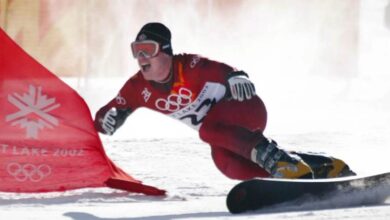Why Are Few Women Leading Sports Science?
Some studies by CLACSO's Sport, Culture and Society Working Group had seen growth in recent years, before the pandemic.

The Woman Post | Rafael Ricardo Lopez Marti
Listen to this article
Currently, to stop the spread of the health crisis caused by COVID-19, the entire world has found itself in the need to make some modifications to routines, forcing voluntary quarantines. In this sense, the CLACSO's Sport, Culture and Society Working Group has taken the decision to carry out a series of bulletins, starting in 2020, to discuss research topics, emphasizing the socio-health emergency that exists and the reflections from Latin America.
On the other hand, the countries that are participating in this disciplinary perspective that has characterized the field of Sociocultural Sports Studies of the Latin American continent are Argentina, Brazil, Chile, Colombia, Mexico, and Uruguay.
The Pinnacle of Women’s Sport
Women's sports are one of the most exciting trends at the moment and have been characterized by developing an opportunity and new commercial proposals, to attract fans. A report by the company Nielsen Sports in 2018, states that 84% of sports fans, in general, have interests in women's sports and 51% are men. This corroborates, that young women are interested in watching women's sports and that woman’s sports incorporate the opportunity to involve male fans.
On the other hand, 40% of people in countries with a team competing in this year's tournament are interested in women's football, as fan interest and business investments in women's football are growing ahead of the 2019 FIFA Women's World Cup.
Clubs who have a women's strategy (vs lumping in w/ the men) generate on average +224% revenue
Sponsorship/licensing deals > traditional media rights deals
We found similar data in our multi-sport @thefanprojectco research. #COMINGSOONINVEST. IN. WOMEN.https://t.co/9EJmw94xHb
— Caiti Donovan (@Caiti326) June 1, 2021
Also read: THE REASON WHY GYMNASTS DECIDE TO MODIFY THEIR COMPETITION OUTFITS
Tools To Improve Women’s Sport
The need to solve the problems that affect sports employment in women continues to reveal a low percentage of women who decide to start their professional path training in teachings linked to sport, being the increasingly drastic decline in graduates. In addition, the figures for sports practices continue to be a true reflection of the fact that sports policies systematically forget more than 90% of the population, occupying only 8.39% and being framed in the federative sphere. That is why the Statistics and Studies Division of the Technical General Secretariat of the Ministry of Culture and Sport, has available the Yearbook of Sports Statistics 2020, with information on employment, companies, education, spending, tourism, and sports habits.
The sports sector represents 1.1% of total state employment, that is, the parity is far from the average and falls by 1.3 points based on the previous year, standing at 59.3% of men and 40.7% of women. With regard to the number of graduates of sport, 3.547 are at a university level, which represents 14.35% of the total. 53.43% are graduate students, 16.04% of sports education of special regime (EDRE), and 11.64% of training for employment, according to the web portal of the COLEF Council – General Council of Physical and Sports Education.
On the other hand, as for sports physical practice, the reference is still the data from the 2015 survey, which indicates that 46.2% have a weekly habit.
Sponsors Interested in Funding Women’s Football
82% of top-tier women's sport is administered by members of the National Association and 64% of MMs also offer the majority of funds for competitions. In addition, 24% of sponsors contribute significantly to the organization and funding of the best women's soccer.
On the other hand, 177 associations participated in the research and employ more than 1.000 people dedicated exclusively to women's soccer, that is, 10% of all employees being in the United States and Canada. However, this reflects the key for small MEs, to fund specific positions in the evolution of women's sports, according to FIFA's Women's Football Surveys.





